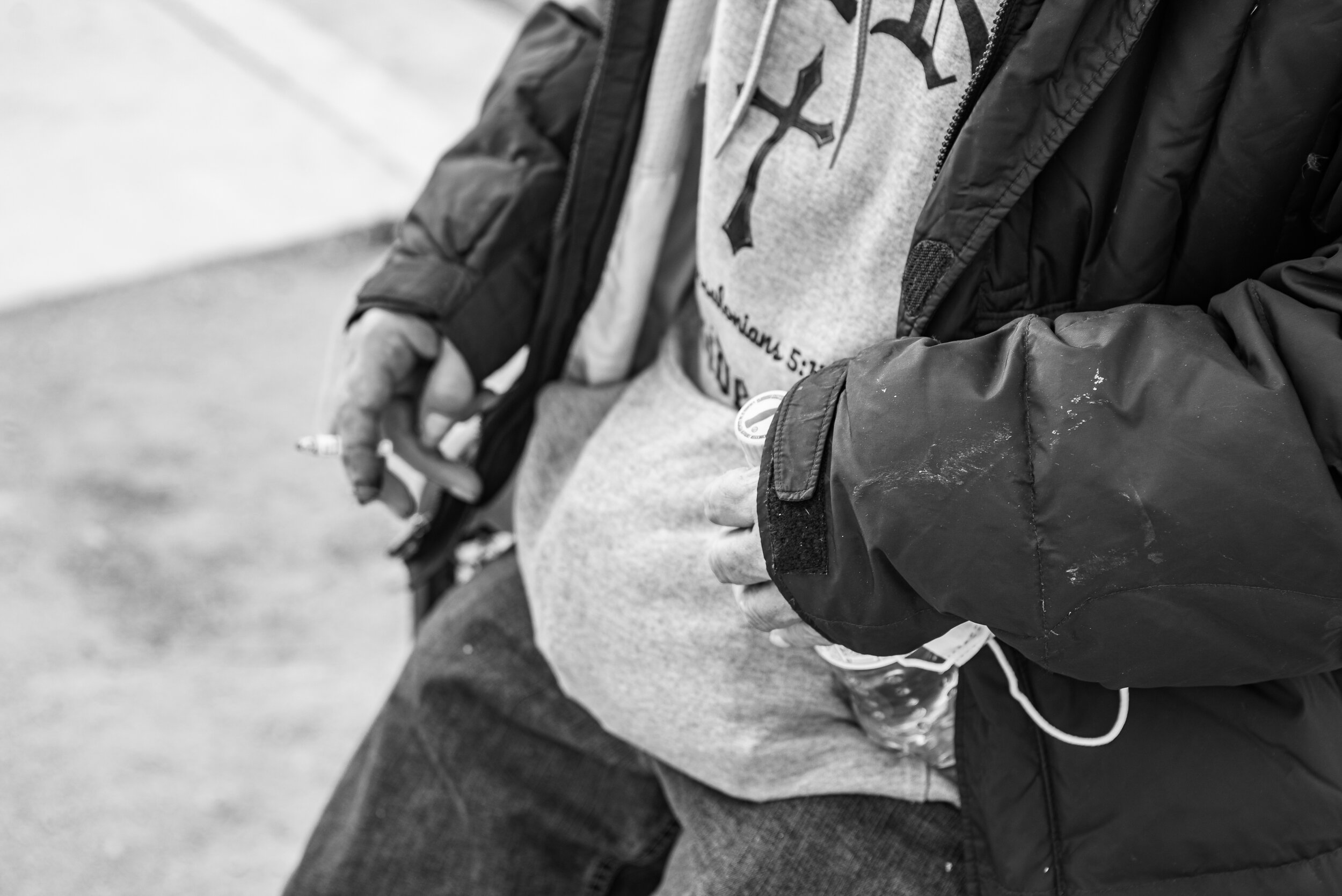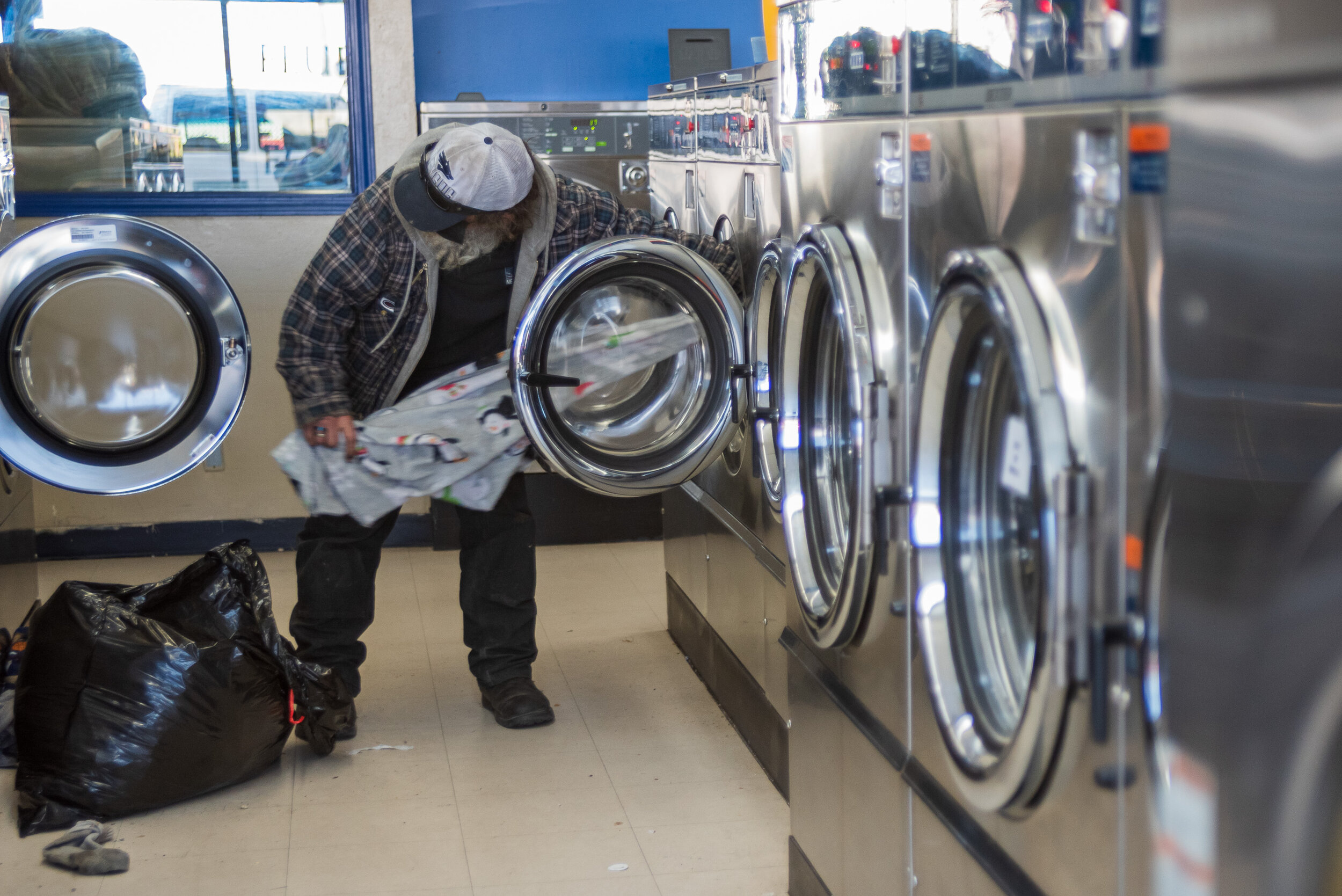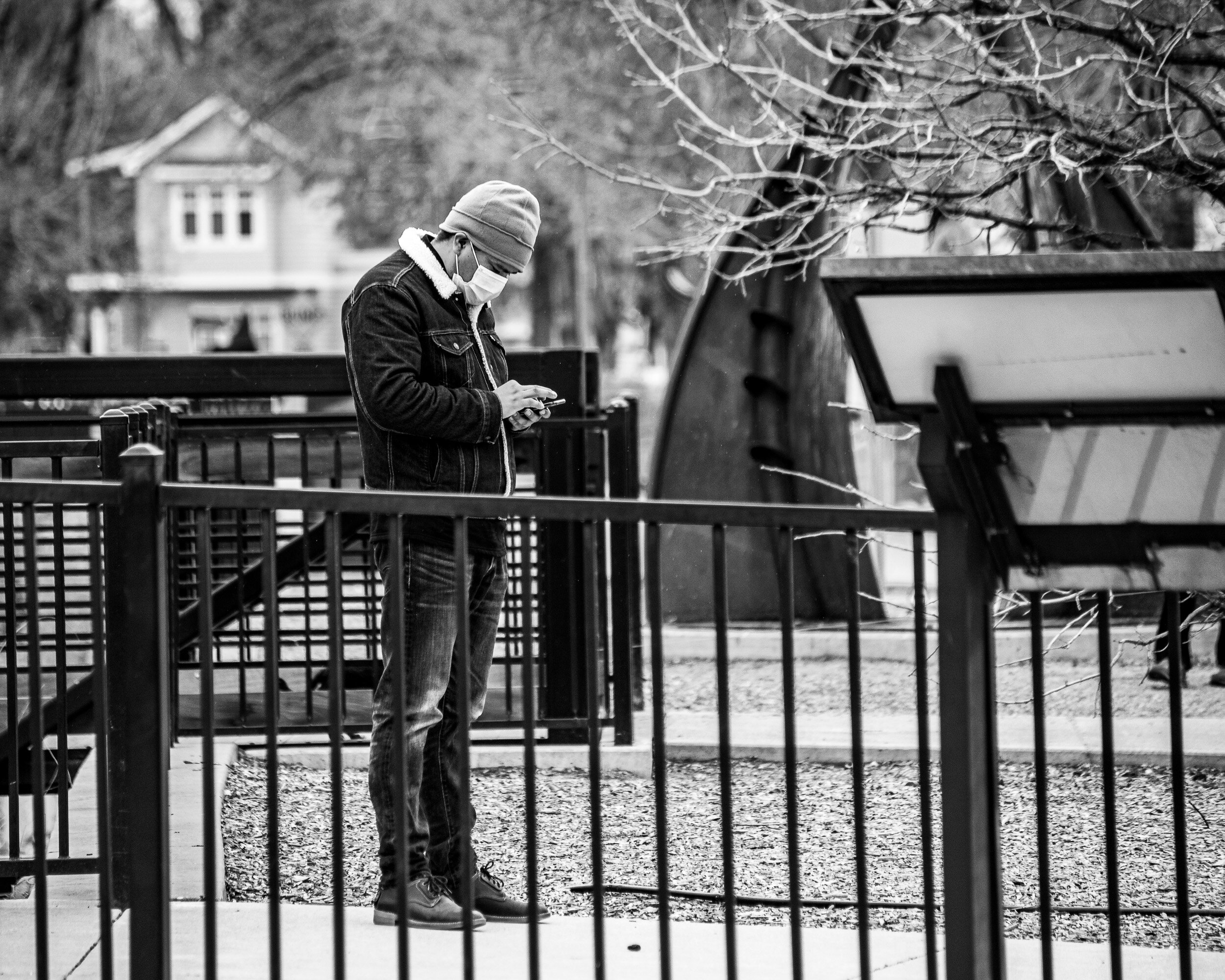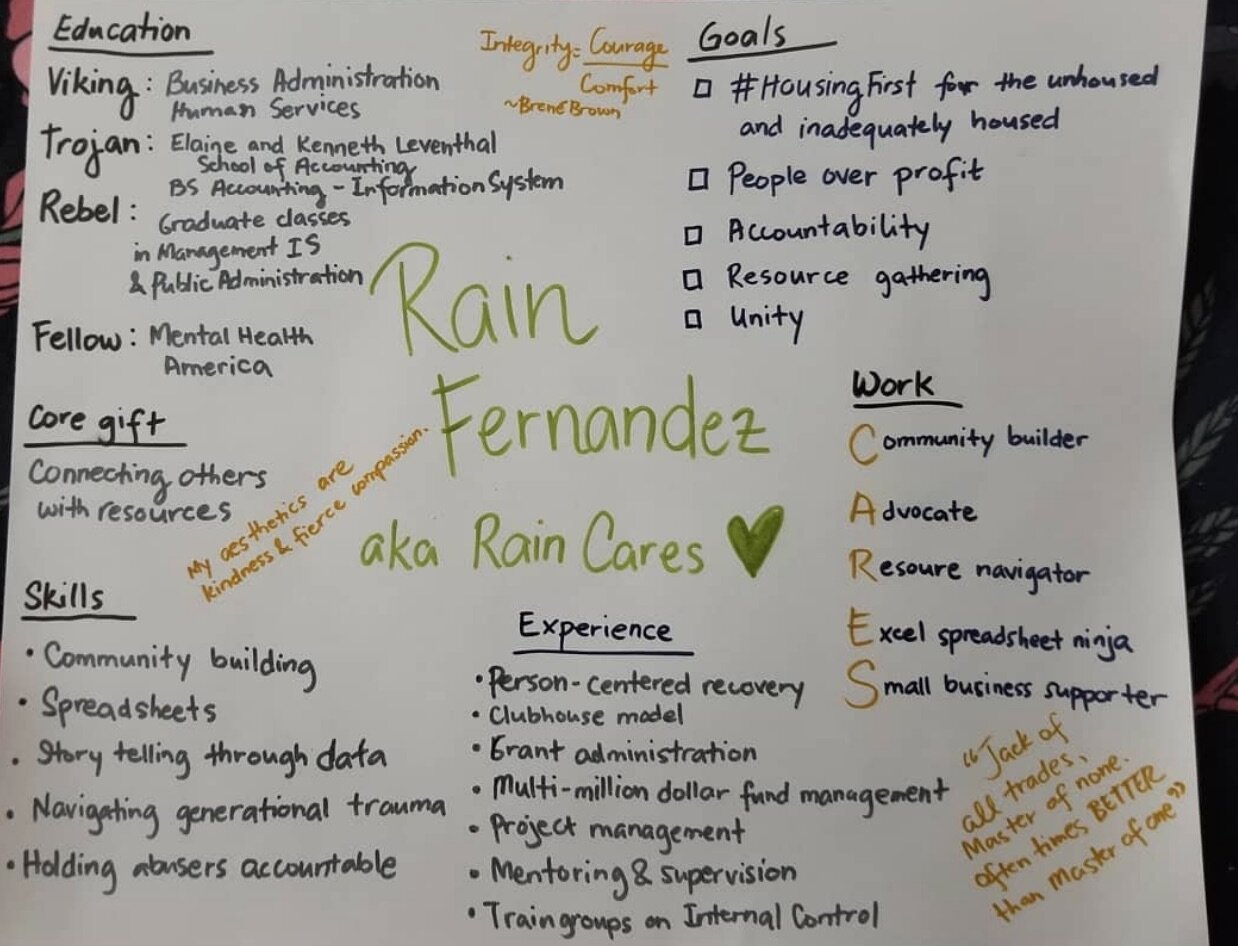Racist History Renewed
Shea’s Tavern opened in Midtown in the early 1990s, and is currently owned by Lacey Shea. It has a reputation as a raucous late night party place, also favored by other bar and restaurant employees. The restaurant next door, Homegrown Gastropub, is owned by her brother, Spencer Shea, and often gets rave reviews for healthy food and a quaint bistro environment. But during the Black Lives Matter protests last year, social media outrage over racist posts associated with Lacey Shea took off.
In April 2021, this concern was renewed when Reddit user u/concernedcitizen775 posted a screenshot that shook the Reno subreddit. The title of the post read: The owner of Sheas Tavern liking a photo of a devout white supremacist. Interesting. The screenshot shows her like (from her account @ladyshea2020) on a post of a picture of her with Instagrammer jesuschrist666hamc with a caption stating “The Fourteen Words”, a slogan popular among white supremacists: : "We must secure the existence of our people and a future for white children." His publicly listed bio now reads: HELLS ANGELS NEVADA NOMADS! and I am your lord and savior.
The Instagram post featured the caption, “We must secure the existence of our people and a future for white children. #HELLSANGELS #FTOT #ALWAYSUS”. The 87% upvoted Reddit post featuring the screenshot had 66 comments before being locked by r/Reno moderators.
Boycotting the Tavern
One Reno citizen, wishing to remain anonymous, shared her shock and disappointment after seeing the post, along with the other instances involving Lacey Shea on social media. She was first taken to Shea’s by a now-ex boyfriend, who had been going to the bar for years.
“I was shocked because me and my boyfriend, who is Black, always tried to support businesses that were pro-BLM, although many Reno businesses aren't too open about this. I talked to my ex and he was shocked and saddened that a bar that he used to enjoy is now a bar he would feel unsafe in,” our source said. She stated she would feel unsafe if her name was included. “I think if more people saw these images, rather than just hearing about the situation, they would take it more serious and realize that this is actually terrifying that there is a local bar that supports racism.” Reached for comment via social media, Lacy Shea and Shea’s Tavern have not responded.
This was one of Lacey Shea’s public apologies from her Facebook. The post is no longer visible to the public. Many initial commenters voiced their support for her.
Lacey Shea wrote she was power scroll liking, including this post which includes the double lightning bolt symbol associated with the Nazi SS corps, which pledged an oath of loyalty to Adolf Hitler and helped execute the Holocaust. The Filthy Few slogan is associated with members of the Hell’s Angels who have committed murder on behalf of the biker gang.
Negative Reviews Shunned by Yelp
Some Reno locals have retaliated with negative Yelp reviews, which have been displaced for violating Yelp’s terms and services and only appear in another section called 37 Reviews Removed for Violating our Terms of Service where you can’t see them. Another removed section called “12 reviews for Shea's Tavern that are not currently recommended. Note: The reviews below are not factored into the business's overall star rating,” can be read, but are all from before these controversies.
Over 35 1-star reviews have been removed since April 4th, 2021. Due to this, they still have a 3.5-star rating. We contacted Reno-based Michael Tragash, who lists himself as community manager for Yelp. He pointed us to different pages of the website, including community guidelines, and what happens when a local business gains increased public attention: “When a local business makes the news for something controversial, people often go to Yelp with the intention of sharing their views on the situation in a review, photo, or other content. These comments typically don’t reflect a personal consumer experience with the business, which should always be the focus of user content on Yelp,” is the wording on Yelp.
Shea’s Facebook page has deleted any comments on the situation altogether. On the Shea’s Tavern Instagram page, two comments on a recent post have been hidden, but are still viewable upon clicking on them. One says, “Fuck Nazis”, with 14 likes, while another says, “Nazi punks fuck off”, earning 31 likes.
Though the original post has been locked, many memes have been posted about Lacey Shea and her tavern across local social media. A recent meme ties in Homegrown Gastropub. After being mentioned in a Reno citizen’s Facebook post, her brother and Homegrown Gastropub owner Spencer Shea (above) stated he is not affiliated with Shea’s Tavern.
Why the Media’s Silence?
Many who know about the social media outrage were confused as to why local news hadn’t covered it, while others were mad about the lack of substantial apology by Shea’s. Many Reddit commenters claimed the man who originally posted the photo worked for Shea’s, and was possibly in a relationship with Lacey Shea. Her Facebook status is currently “single”, and does not follow the account that made the original post. Since she didn’t respond for a direct interview, we couldn’t ask about her exact relationship with Instagram user jesuschrist666hamc.
Despite Lacey Shea’s claim that the caption on the post was not “The Fourteen Words” when she liked it, she was in a picture with someone whose own Instagram comments are filled with the lightning bolt emojis, representing the white supremacist symbol “SS”. It is difficult to believe that this man’s behaviors and beliefs were unknown to Lacey.
This photo was posted on Lacey Shea’s old Instagram and confused many as to whether a Nazi salute was being celebrated. We tried to get direct comment from Lacey Shea but did not hear back.
Lastly, when scrolling to the very first post on @lacested, Lacey Shea’s previous Instagram account, this below is the first photo which appears from that account.
Another Reddit post was made in late April, reminding people to not forget about this.



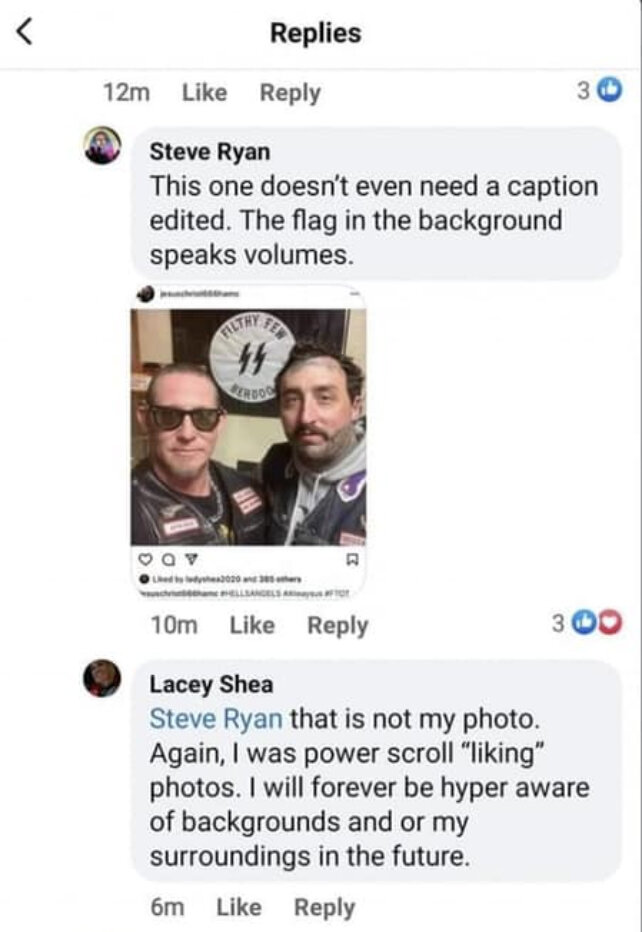









![“[Reno] is changing rapidly. And I saw that being here and everyone I talked to, they are being here for 10, 20, 30 years. They described the city today, nothing to do with the city that they knew when they moved here initially. And you know, all th…](https://images.squarespace-cdn.com/content/v1/5675d221cbced60a236e28b8/1618245728339-2LT1CXMA51MRNBDJD89U/20210312-March-Street-BednarskiR-8682.jpeg)





